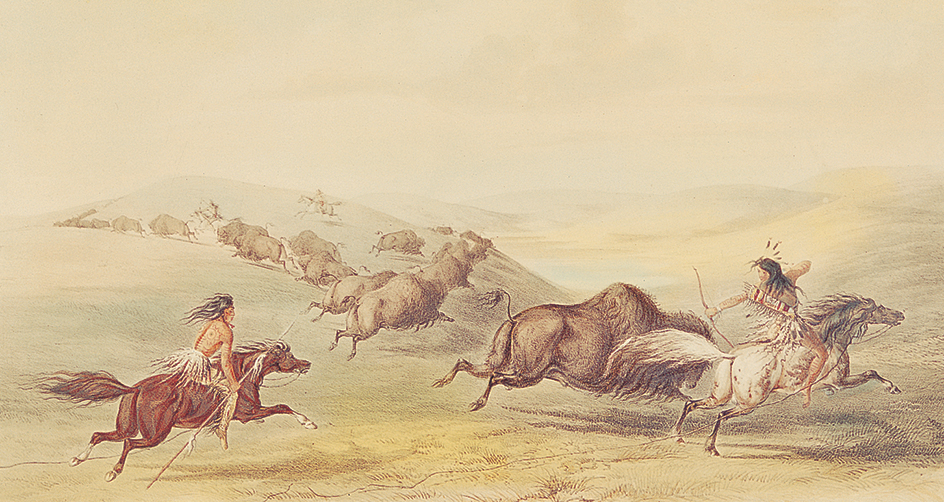Buffalo ceremonials were rites honoring the animals that provided food, shelter, and clothing to many Native American tribes. At the sun dance of the Plains tribes, when warriors tortured themselves imploring the sun for power, they placed a buffalo skull on top of the central pole. A successful dance meant not only visions for the warriors but also good hunting for the tribe.
Important Plains military societies were named after the buffalo bull and used its horns as insignia. The sacred “calf pipe” of the Oglala band of the Teton Sioux, a symbol of good fortune for the group, was said to have been given them by a female buffalo who took human form. Southwestern tribes, which only took short trips into the Plains, held winter ceremonies to bring luck to the summer hunt.

At Taos, New Mexico, a crowd of men, wearing buffalo heads, swayed and pawed the earth like bison at these rites. In other pueblos, two or more men, in buffalo masks, danced beside a woman, the “mother of game,” who supposedly brought the animals to the hunters.
